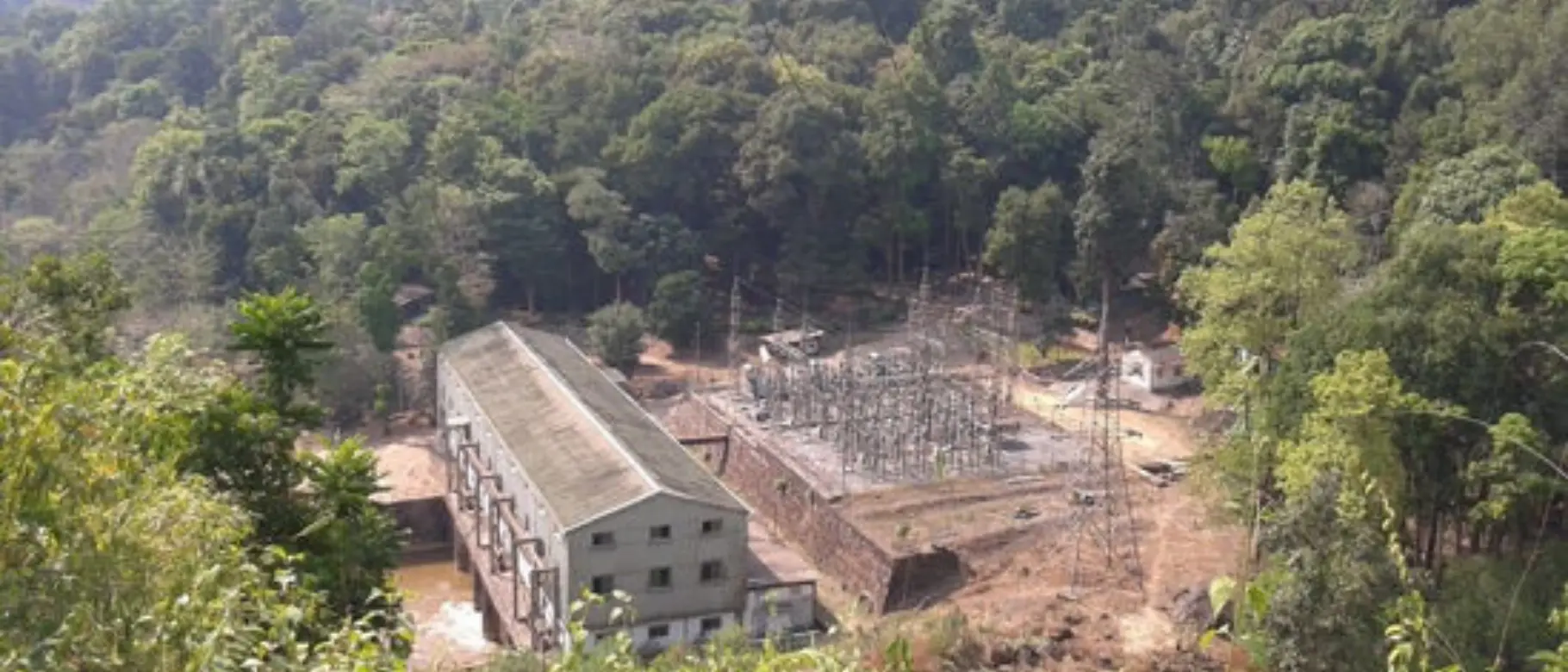
18 MW Kemphole Mini Hydel Scheme (KMHS)
18 MW run-of-river power in Karnataka
KMHS is an 18 MW run-of-river hydropower plant on the Kemphole stream in Hassan district, Karnataka. It feeds electricity into the grid of the Karnataka Power Transmission Corporation Ltd (KPTCL) via a power purchase agreement. Commissioning took place in two stages: 2 × 6 MW on 20.10.2003 and 20.11.2003, a further 6 MW on 10.01.2005. No resettlement was necessary; the site is located in the Kemphole reserve forest.
Project goals
Renewable electricity for southern India
The project uses the hydropower potential of the Kemphole Stream to generate electricity and supplies the electricity generated to the KPTCL grid and the Southern Region Grid. This strengthens the power supply and displaces fossil fuel generation. The project contributes to the reduction of greenhouse gas emissions and sustainable development. According to the documents, no negative environmental impacts are expected.
Technical details
| Technologie | Verfahren | Besonderheiten |
|---|---|---|
| Wasserkraft | Laufwasserkraft (3 × 6 MW) | Horizontale Francis-Turbinen, 500 rpm, 3‑Phasen‑Synchrongeneratoren |
| Wasserbau | Gated Weir | Flussbett 319 m; Stauziel (FRL) 340 m; Bruttofallhöhe 68 m |
| Netzanbindung | 66 kV Doppelstromleitung | 29 km bis Umspannwerk Sakaleshpura; 124 Masten |
| Betrieb | Netzgekoppelt | Einspeisung gemäß PPA an KPTCL |
Economic and social benefits
- 1
Strengthening the power supply
Karnataka experienced significant supply bottlenecks in the 1990s. The project feeds additional electricity into the grid and supports regional development.
- 2
Workplaces
During construction and operation, direct and indirect employment opportunities were created for the implementation and management of the power plant.
- 3
Infrastructure established
A 29 km long 66 kV double-circuit line with 124 pylons was erected through difficult terrain for the power evacuation.
- 4
Technological impetus
Horizontal Francis turbines and an automatic trash rack cleaning system are used. As the first hydropower project in the Netravathi catchment area, it has initiated further projects.
- 5
No resettlement
There were no resettlements and no associated rehabilitation measures at the remote forest site.
Global climate significance
Emission reduction
Emissions are avoided by displacing fossil fuel-based grid electricity generation. A total of 250,426.9 tCO2e is planned for the first crediting period; the combined emission factor is 0.814 tCO2/MWh.
Fossil replacement
The feed-in reduces the need for coal-based electricity in the Southern Region Grid. This also avoids SOx, NOx and dust emissions as well as emissions from fuel extraction and transportation.
Conserve resources
The use of hydropower saves coal, oil and gas for other applications.
Role model effect
As the first project in the Netravathi Basin, it promotes the acceptance of further renewable projects in the region.
Conclusion
KMHS shows how run-of-river power can reliably supply electricity in difficult terrain and avoid emissions. The 29 km grid connection and operation without resettlement make the project particularly influential in the region. It strengthens the supply, climate and environmental balance at the same time.



